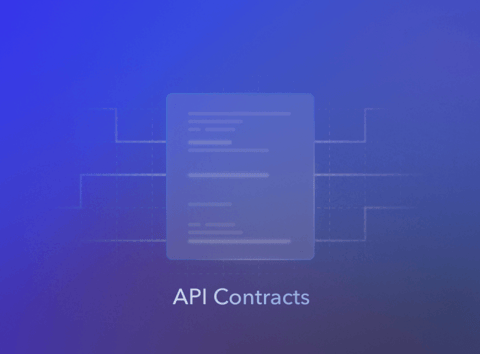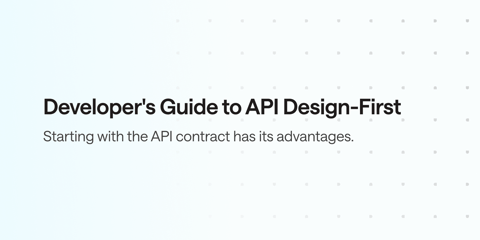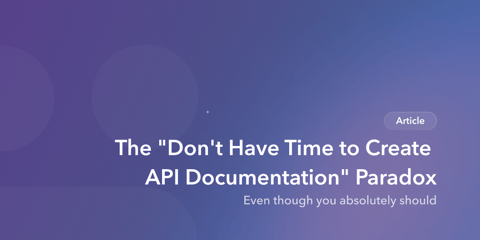In the world of software development, an API contract plays a vital role in ensuring systems, teams, and machines can interact effectively.
An API (Application Programming Interface) is essentially a set of rules that allows different software systems to talk to one another. Just as in the real world, where formal contracts set expectations and obligations between parties, APIs require a kind of “contract” to clearly define how they’ll operate and communicate.
Let’s have a little look at the history of the API contract, from WSDLs to the modern de-facto standard OpenAPI.
What is an API Contract?
An API contract is an agreed-upon document that defines how an API should behave. It outlines the “terms” of the interaction between different parties—whether those parties are humans (developers), machines (software), or both. This contract typically includes:
- The available requests the API will accept
- The format and structure of those requests (endpoints, parameters, etc.)
- What the API will return in response
- How errors will be handled
The key element here is agreement. All parties must agree to these rules before development begins. It’s not just a technical description, but rather a binding contract that ensures all parties understand their roles and responsibilities. Once established, each party can confidently build their system, knowing that as long as they follow the contract, their interactions will work seamlessly.
What makes API contracts so valuable is their ability to provide a predictable framework. Parties relying on the API can develop independently, and tools can be created to automate testing, ensuring that the actual API matches what was agreed upon in the contract.
From WSDL to OpenAPI: A Brief History
In the early days of web services, WSDL (Web Services Description Language) was used to define SOAP-based APIs. WSDL provided a kind of contract for APIs, but was focused on XML-based services. While effective in its time, WSDL was often seen as complex.
There was such resentment to the approach that when REST APIs became the primary paradigm for HTTP API, the entire concept was essentially scrapped and people just started flinging arbitrary XML and JSON around all over the place, with no contract involved at all.
Over time the lack of an API contract became more problematic, and various API description languages popped up to try and explain what people should expect from an API. Swagger, RAML, API Blueprint, were all popular, but these were often focused on building documentation, and were outside of the user-flow more as an option thing you could look at if you wanted.
Eventually these formats started being used for more and more use-cases like “contract testing” in test suites and server-side validation, bringing the contract into the codebase, allowing for them to be used to power code instead of describe code.
OpenAPI: A Modern Standard for API Contracts
In the late 2010s Swagger became OpenAPI and got far more useful, and the other formats all died off making OpenAPI the most widely adopted standards for defining API contracts today. OpenAPI provides a formalised way of describing APIs, acting as the blueprint for how they are structured and behave.
By describing the endpoints, request types, parameters, and responses, OpenAPI ensures that everyone—developers, systems, and even machines—can reference the same shared agreement.
Benefits of OpenAPI Contracts
- Clarity and Agreement: OpenAPI contracts leave no room for confusion. By using OpenAPI, both API clients and consumers know exactly what to expect. This reduces the chance of miscommunication between different development teams or systems.
- Readable by Humans and Machines: OpenAPI is designed to be both human-readable and machine-readable. Developers can understand it, but automated tools can also read it programmatically, acting on the contract to ensure compliance.
- Automated Testing and Validation: OpenAPI contracts lend themselves well to automation. Once a contract is in place, tools can automatically generate tests to ensure the API behaves as specified. This means any deviation from the agreed contract can be caught early, preventing integration issues further down the line.
-
Flexibility for Various Relationships: API contracts serve different kinds of relationships:
- **Human-to-Human**: Developers from different teams or organisations can use the OpenAPI documentation to understand how an API should work, enabling collaboration without constant communication. - **Human-to-Machine**: A developer can build software that interacts with an API, knowing that the API will respond in a predictable way, thanks to the contract. - **Machine-to-Machine**: Automated systems can communicate directly using APIs, with both sides relying on the contract to ensure the right data is being exchanged in the correct format.
Example Use Cases of API Contracts
- Human-to-Human: Imagine two teams working on different components of a project. The backend team defines an API using OpenAPI, while the frontend team uses the contract to guide their development. As long as both teams adhere to the contract, their work will integrate seamlessly, despite working independently.
- Human-to-Machine: A developer is building an e-commerce app that integrates with a third-party payment processor. The payment API’s OpenAPI contract tells the developer exactly what information they need to send, potentially even using mock servers to create a realistic API to code against, which will respond in close enough ways that allow integration to progress a lot easier than somebody sending a Word document and copying and pasting same code. This eliminates guesswork and ensures the payment service is integrated correctly.
- Machine-to-Machine: Consider an automated supply chain system. Various machines and databases need to share stock levels and reorder products automatically. They communicate through APIs, with each machine using the OpenAPI contract to know how to request and send data. This ensures everything runs smoothly without human intervention.
The whole way through all of this process, OpenAPI-aware tools can check HTTP traffic coming in, and report errors if requests or responses mismatch the stated contract, helping API consumers and API developers know if anything is going wrong.
Summary
API contracts are the backbone of reliable and scalable API development, ensuring all parties—whether they’re developers or machines—know exactly how to interact with an API. The OpenAPI Specification has emerged as the leading way to define these contracts, offering clarity, flexibility, and the ability to automate testing and validation.
Whether you’re coordinating between development teams, building software that interacts with third-party services, or managing machine-to-machine communication, OpenAPI’s ability to define a clear contract ensures smoother integration and more predictable outcomes. By embracing OpenAPI, organisations can build with confidence, knowing their APIs will behave exactly as agreed—keeping everyone, and everything, on the same page.


